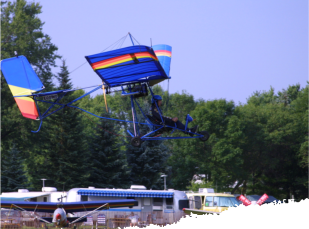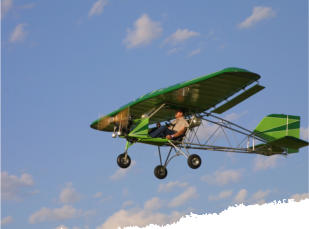



Ultralight Aircraft Parts:
UltralightNews.com

Ultralight Aircraft, buying a used ultralight aircraft,
how to buy a used NOT abused ultralight!
Ultralight Aircraft Airframe: This is the basic structure of the craft, the center
section or the area the pilot sits in.
Found in the airframe (in conventional ultralights) are: the joystick, rudder
pedals, rudder cables, throttles, throttle cables, usually the fuel tank. It is also
the area of the craft that the landing gear, wing struts and tail surfaces connect
to.
Ultralight Aircraft Propulsion system: Powers the craft, engine, exhaust system,
carburetor, fuel pump, reduction drive, and propeller make up the propulsion
system.
Ultralight Aircraft Control system: This is what controls the craft, usually a
joystick and rudder pedals, connected to the ailerons, elevator(s), and rudder(s).
Ultralight Aircraft Landing gear: These are the parts of the aircraft that contact mother earth during taxiing, take off and landing. It
is the area that must "take a licking and keep on ticking."









Ultralight Aircraft Wing assembly: The parts that make up the wing, and connect it to the airframe.
These parts together make up the aircraft. In many ways they are similar to the parts making up the human body, and like the human
body, with age, neglect, and lack of proper care and feeding, things once done all night, now take all night to do, or can't be done.
The advantage that an ultralight has over the human body is it consists of replaceable parts.
The disadvantage is that when you are buying it, the seller may stretch the truth a
little by forgetting to mention that the little old lady that flew it "only to church on
Sundays," was 200 miles from that church. That the only field she had to land on was
plowed, and that several times on take-off she clipped the top off several trees.
Since ultralights do not require engine or airframe logs, it is very hard to disprove
the actual hours of use an ultralight has on it.
When negotiating the price of a car, you would take tire wear, paint and interior
condition, dents, rust, etc. into consideration.
You should do the same when buying an ultralight.
Let's look at these areas of an ultralight aircraft in a more detailed way.





